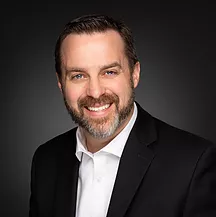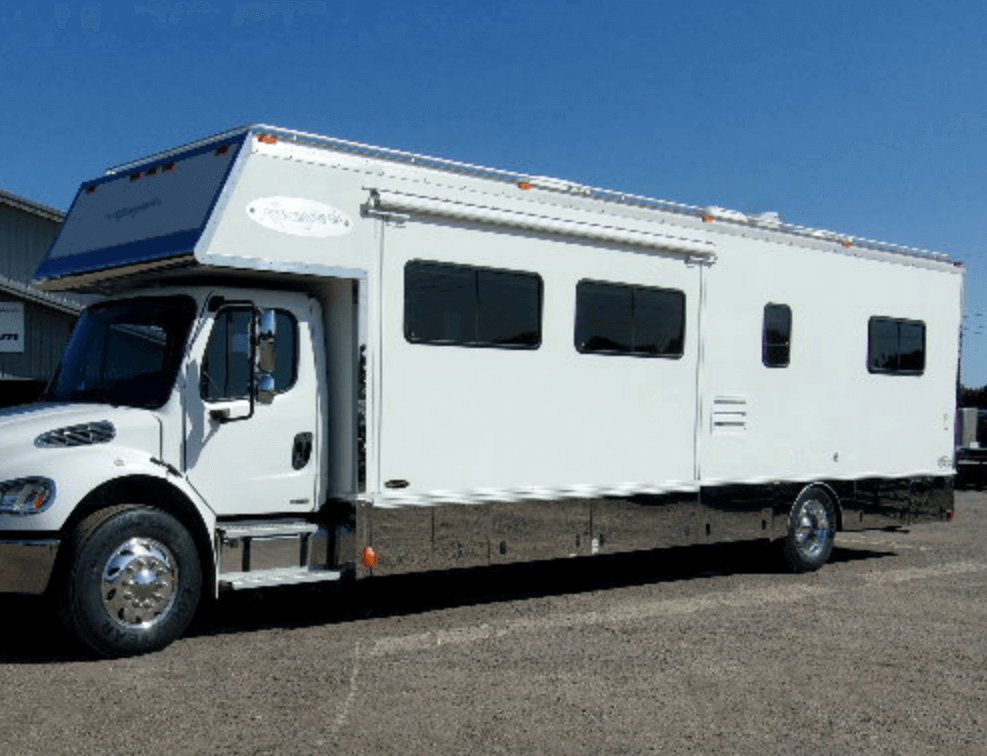Do You Know All The Mobile Clinic Regulations In Your State?
Every state places a differing emphasis on regulating mobile services such as mobile clinics (primary care, health screening, etc.), mobile dental,...
13 min read
 Travis LeFever
Feb 3, 2021 9:30:03 AM
Travis LeFever
Feb 3, 2021 9:30:03 AM

Looking for financial support for your mission? Gain actionable insight from a world-famous fundraiser, Marcy Heim, and experienced veterans of the mobile health industry to discover how to successfully raise funds for your mobile medical program.
Mobile healthcare is quickly becoming the new normal and for good reason. It’s a cost-effective and versatile solution for providing medical services to underserved communities. As the demand grows, more and more medical professionals are pursuing mobile opportunities to expand their reach and play a part in making healthcare available to those that need it.
The first hurdle these ambitious healthcare teams typically run into is gathering enough funds to turn their vision into a reality. Without the proper connections and understanding of the fundamentals of fundraising, this setback can prevent a mobile medical mission from ever getting out on the road.
If you’re starting out on your journey to developing a mobile health program, you’re in the right place. As experts in the mobile health industry, we’ve helped dozens of missions materialize from a passionate idea into a successful program.
For many years, the Mission Mobile team has worked alongside world-famous fundraiser, Marcy Heim. We’ve been incredibly fortunate to have some of her magic fundraising skills rub off on us!
This ultimate guide to fundraising is loaded with everything you need to know about how to ask and receive the funding you need to take your mission out on the road. While it is impossible to outline a specific example for every cause out there, the following tips in this guide can be easily adapted to your unique mission and organizational structure. Let’s dive right in.
Fundraising for a mobile medical program requires you to take action. Your goal is to make meaningful connections with people and give them the opportunity to support your organization. Before you’re able to have those conversations, however, it is important to be prepared and put yourself in the shoes of whom you’re asking to contribute.
Marci has taught us that it all begins by understanding why people give, having a mindset for success, and mastering the artful ask. It is also key to understand philanthropy, which is “the effort to promote the happiness or social elevation of mankind, as by making donations”. Research shows it is from the ancient Greek - “philianthropia” which literally translates into “love of humankind.”
With these principles in mind, you can begin the discovery process into the giver’s perspective.
Your greatest advances in accomplishing your mission will come when you can marshal major support. The best way to do this is to create and sustain an ever-growing group of individuals who continually invest in your organization... with larger and larger amounts over time.
The path to building lasting connections like these starts with understanding what inspires prospective givers to give. This will help you determine how to best present your opportunity.
You’ll want to gain insight into the experiences prospective givers have had in the past. To do so, ask these two questions:
The answers will tell you if it’s best to proceed with the journey, enhancing their joy, or if you must start first by rebuilding their trust. Apart from your prospective giver’s personal experience, there are several general reasons why a person makes a donation.
We’ve broken it down into the following primary reasons:
They believe in your mission.
The #1 reason a person becomes an ongoing contributor to an organization is they truly believe in the cause and want to play a part in its success.
The love they feel for others manifests itself when people invest their money in areas that feed their passions. What may be less obvious is what missions people believe in, and why. If they believe in your mission, they will support it.
They were artfully asked.
Willing donors are oftentimes overlooked. They aren’t even asked. It’s important to remember that you already have a “no”. By not asking, that “no” remains a “no”. You never give it the chance to turn into a “yes”.
How do you turn that “no” into a “yes”? Well, first, it’s important to let people know specifically how they can help. It may seem obvious, but in order for someone to give a specific amount to support an opportunity, someone needs to artfully ask them to consider it.
The ask is the part of the process that gets most confusing, and is the most feared.An individual will only give a major gift if they know there is a need and they can see a match in value in terms of the dollar amount and the impact it will have (ROI).
You have to take the time to engage those closest to the organization - whose opinions and networks ultimately lead to investments and spell success or failure for the mission.
They have confidence in your organization.
Two of the most critical factors that prospective givers consider when donating major gift investments are trust in stability and ethics. It is essential to your fundraising efforts that you show your organization is fiscally sound and stable.
Use your experience and existing programs as leverage to show you can be trusted with large sums of money and that you use the majority or all of the funds you receive for the purpose for which it was given. Keep the faith!
They want to honor someone or something.
A common reason for giving is the donor’s desire to honor something or someone important to them. They discover a special connection between your cause and their honoree, or they simply want to do something grand to as a tribute.
One thing to remember is that the connection isn’t always obvious to you, your volunteers, or even the donor. While sometimes they may come right out and say, “I would like to honor my dad”, more often these types of connections exist unknowingly.
These are the types of links that we help our clients discover to add incredible value to their donors’ giving experiences. There is almost always an opportunity to celebrate someone or give a gift in their name. Helping your givers realize these opportunities is a powerful way to gain loyal donors that are in it for the long haul.
They want to extend personal values.
We’ve learned that this point is easily overlooked. Most professionals trying to raise money walk into a meeting with a donor with the desire to extend their own values, but what they forget to consider is the major donor’s desire to extend THEIR values.
Remember – we aren’t judge and jury of what someone else believes! When we adjust our focus to learning where the giver’s values lie, we can then help them recognize how they can extend those values with their donation.
They respect your organization’s leadership.
Every member of your team – staff, leadership, board members, and volunteers – are a representation of your organization’s stability, ethics and personal image. They are the ones who are out there doing the work and living the values of your mission every day.
For this reason, it is important that you thoughtfully cultivate your personal image. Your board members need to be rock-solid and embrace strong policies for financial management and oversight. You can lead with this by offering your financial statements to say with integrity your donor’s gift will be well stewarded.
They want to belong to something and help their community.
When a donor shifts from minor to major, the organizations and even other donors treat them differently. Now they’re part of clubs, societies, special events, more attention overall. This puts them in a group of like-minded investors, and that’s often an important, intangible reason to give.
On the other end of the spectrum - organizations provide numerous opportunities to see friends who share your values or passions, in a safe setting. While the good of the community at large is often the principal reason for giving - certain projects may resonate with a donor’s personal interests, passions, or values%20(1).png?width=2551&name=Three%20Ways%20to%20Fund%20for%20Your%20Mobile%20Medical%20Program%20(1)%20(1).png)
Douglas Lawson, PhD, author of “101 Ways You Can Improve the World and Your Life”, and “How Giving Can Change Your Life” defines Philanthropy as “The mystical mingling of a joyful giver, an artful asker, and a grateful recipient.”
In other words, major giving is all about establishing a lasting relationship between the donor, asker and recipient. It isn’t solely about asking for money. This mindset may help you earn a bit of money upfront, but it is by no means the way to build an on-going gifting program.
To develop a successful gift program on a major scale, you need to create a long-term vision with prospective donors that includes a range of giving amounts. You’ll also need to establish long-term staff and leadership to build and nurture long-term giving of substantial amounts.
Major giving only happens on the donor’s timeline, not your own. You don’t want to sacrifice a joyful giving relationship for any perception of reaching your goal “faster”. Remember, it should be a positive collaboration.
There is no substitute for sincere and authentic caring, and mutual respect between the organization and the donor. Metrics and records support the process, but they should never be used to make a donor fit a perception of right, wrong, or our timeline.
This one bears repeating: It’s not about the money - it’s all about the relationship, and what the
money does.
The keyword here is: attract. And to artfully attract major donors to contribute to your organization, you have to make their involvement appear attractive.
To do so, you’ll want to identify individuals whose values and interests line up with that of your organization. Then, you can allow Board members to begin playing a role in creating thoughtful, long-term relationships with these individuals
(Pro Tip: Your results will be proportional to the time invested by the Board)
The point at which many people go wrong is moving forward with a lack of clarity. If anyone on your team is unclear about the “ask” or what exactly a donor’s contribution will do, they won’t be successful in telling a clear and compelling story.
We recommend looking to alumni, users, family and friends of users, annual donors, family and friends of donors. Ask potential givers to self-select by signing up on social, newsletter, making annual gifts, call in, or come to an event.
Qualify them by their network, known wealth (unknown interest), affiliation with another org that’s a match, or if they hang out in the same places your current givers hang out. Further qualify by capacity and interest. (Pro Tip: Someone has to talk to them.)
Wealthy people create barriers to prevent incessant requests for money, but known philanthropists are generally open to hearing about every opportunity that touches their community.
Additional tips for attracting donors:
Everyone in your organization can help you find prospective givers! However, it is VITAL that they are properly engaged.
Before you go encouraging anyone on your team to seek out potential donors, you want to ensure that they are 100% clear on:
Remember they are representing you, your organization and your mission! It’s important to protect the image of these by helping board members and volunteers perfect their articulation of “their story” and how they plan to approach a prospective giver.
You should be in agreement about the team member’s next steps once a potential donor is identified, as well as completely clear that they understand the Artful Asker Cycle and where Exploration fits in the larger cycle of Joyful Giving.
By the same token, your board members and volunteers should also feel confident and trust that you will treat whomever they bring into the cycle in an artful and respectful manner. Your team members may feel concerned about helping you grow the base of your mission because not everybody they know, in other organizations, does so with respect and caring.
There are many fundraising consultants available who can provide full or part-time support, resources, advice and procedures for your campaign. There’s no shame in asking for help.
Shameless Plug: My team at Mission Mobile Medical Group provides the best program support in the nation for organizations who want help with their Mobile Medical Program fundraising campaigns. They are rockstars!
The first in-person meeting to begin the artful asking process can be considerably challenging, and nerve-wracking! You’re finally moving from email or phone conversations to an actual real relationship.
To ease the stress of the situation for both you and your guest, try asking for advice, offering to bring another board member, or meeting in a public place. Another tip is to state directly, “I will not be asking you for money.”
This initial face-to-face meeting is simply your opportunity to share your mission and engage them in your efforts to gauge if what you’re trying to accomplish excites them in any way. These meetings are sometimes formal, sometimes relaxed, and how quickly you move from Attention to Asking, depends on the relationship.
Once you have established that a prospective giver shares your values and has shown an interest in your cause, you can start creating a joyful giver. This is where you need to lay the groundwork to develop a major gifting relationship, or increase a donor’s support significantly over what they have given in the past.
Remember, it takes a whole lot of time, intention and artful communication to ensure that a potential donor fully understands what you do and how you do it. This is the key to determining if they are genuinely excited about partnering with you to achieve your goals.
One strategy is to artfully build linkages between yourself and the giver, your staff or board and the giver, and the org and the giver.
“To adapt a personality style is to show respect for the individual. You are removing any barriers that your personality might create. You are minimizing any negative impacts of your personality. You are maximizing the opportunity to build sincere rapport. It is a show of respect.” - Wayne Reschke, Center for Organizational Excellence
When it comes to giving, we must shift our focus from too broad of an audience and instead identify a narrow audience that shares the same values and may show interest in what you’re trying to accomplish. You can then begin gently breaking through the noise by uncovering specific projects that will be of interest to specific people. Then, you can present those opportunities in a formal ask.
The A.I.D.A. framework consists of four steps: attention, interest, desire and action. It works to guide a potential donor from general knowledge, to matching interests to needs, to helping them in taking action to finally, hearing the artful ask.
In other words, rather than jumping to action or waiting for people to be ready, the goal is to create readiness for action.
Don’t bombard your prospective giver with a monologue of information about your organization. Be a conversationalist. This will allow you to gain a feel for your potential giver’s interests, capacity and passions.
Just as in every conversation, listening is key. Don’t sit there and do all the talking! Ask powerful questions, such as the following, to allow the donor to share the information you want to know:
(Pro Tip: I like to use “Tell me about...” i.e. “Tell me about your last visit to...”)
Some fundraising campaigns can last a few months, while others last an entire year. If your campaign is stretching beyond a year, it is likely too long to be successful.
In order to establish a realistic timeline, you’ll want to start by focusing on the prospective donors that have your highest rankings for both capacity and interest. Based on your initial conversations with this person (or people), you can develop a “best estimate” for how long your campaign will run.
Next, you’ll want to create roadmaps for both working your campaign and bringing your project to fruition. The goal is for these two roadmaps to overlap, so that your donors can see the result of their contribution almost immediately!
It is imperative that you continually identify new potential donors and implement the A.I.D.A. process. This is how you successfully move a prospective giver from the initial attention phase to evaluating interest, to creating desire, to finally – delivering the Artful Ask.
While your first initial in-person meetings should be centered around sharing your mission and learning more about the prospective donor, you should always be prepared to discuss the form of the gift, payment period, and possible combinations of now versus deferred.
Remember – almost every conversation about costs can come with a component of “Wow, that’s way more than I thought it would cost.” This shouldn’t discourage you. It just means that it is important to do your homework so that you’re adequately prepared.
Donors may be surprised by the significant costs involved in securing a mobile medical unit and launching a program like this. The key is to help them understand the significance of THEIR contribution. For example, tell them that this will be the first piece of your partnership, or that it covers the final piece of your program to start making a difference! It is always helpful to point out how your project is going to impact real people.
Now, how much is the right amount to ask for? Don’t be afraid of offending someone by asking for more than their estimated ability. In our experience, we’ve learned that most people are flattered.
What is important is that you base your ask on the information you have gathered about the donor. Make it significant and make it meaningful.
You’ll want to establish who will be by your side when you “speak the ask”. It is essential to your success that you are the one to deliver the artful ask. A high-ranking administrator will generally add prestige, credibility, and valuable insight to the visit. By being present, you also express genuine gratitude for past support.
Your asking team can also include a volunteer or board member. This adds credibility and personal passion to the project when they share their connection to the project, experience with your organization and their positive advocacy for your leadership.
You can also invite an expert on the project to join you in your artful ask to add details and answer the more technical questions. Having someone there that can articulate the project details is always valuable – especially for more complex projects.
Remember that it is of the utmost importance to protect the friendships, partnerships, and trust of your team. Never make a prospective donor, or the person that has connected you with them, feel uncomfortable.
Pro Tip: A “join me” request from either leadership or another board level volunteer can be incredibly powerful in procuring more committed, long-term donors. Make sure this person has already made a contribution that is significant and meaningful.
Now, this brings us to the final tip to fundraising for your mobile medical program: delivering an Artful Ask. There are a few tips we’d like to outline for you in your delivery.
Start your ask to the joyful giver with the words “You have…”
Support your ask to your joyful giver with the words “You understand...”
Complete your ask to your joyful giver with the words “Would you consider...”
Finding the funds to launch your mobile medical mission is a crucial step along your journey to taking your healthcare initiative out on the road! While fundraising may seem like a challenging undertaking, following these guidelines to make an artful ask to a joyful giver makes it a little less intimidating to gain the support you need.

Every state places a differing emphasis on regulating mobile services such as mobile clinics (primary care, health screening, etc.), mobile dental,...

Starting a mobile medical clinic? Learn the easy way from these most common mistakes that mobile medical clinics make so you can start and run your...

Travis LeFever, President of Mission Mobile Medical Group, was recently interviewed by Sonya Dunbar and Melissa Turner of the American Mobile...